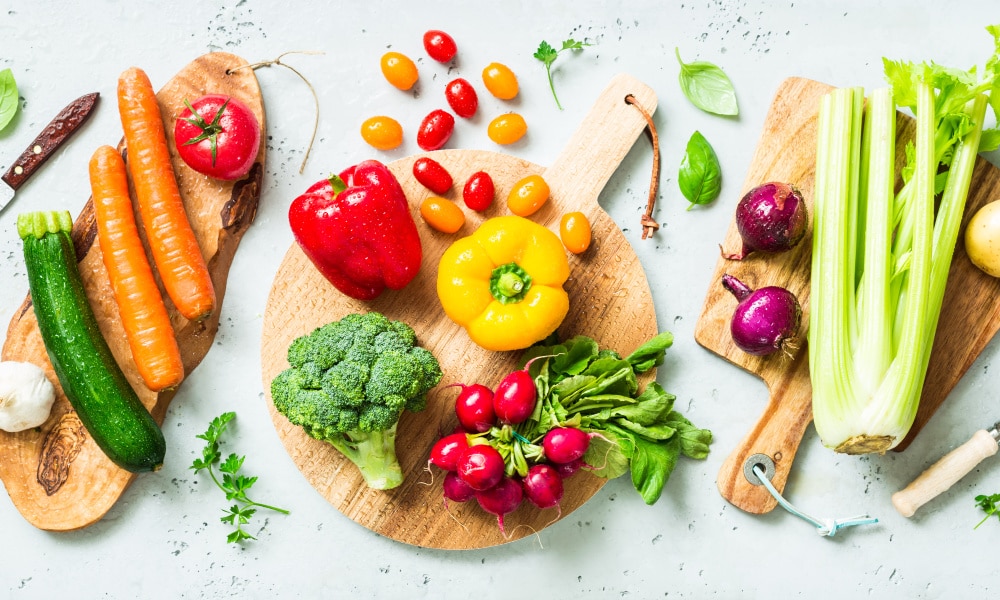The FODMAP diet was created to relieve symptoms of Irritable Bowel Syndrome (IBS) by avoiding fermentable carbohydrates, or high FODMAP foods.
The diet starts by restricting the diet to low FODMAP foods only, and then gradually re-introducing high-FODMAP foods so you can easily pinpoint exactly which food is causing intestinal discomfort.
The FODMAP diet has been shown to greatly improve quality of life for IBS sufferers, though it is not for everyone.
FODMAP stands for:
- F = Fermentable
- O = Oligosaccharides (Fructans and galacto-oligosaccharides or GOS)
- D = Disaccharides (lactose)
- M = Monosaccharides (excess fructose)
- A = And
- P = Polyols (sorbitol, mannitol, xylitol, maltitol)
The objective of the FODMAP scheme is:
- To limit consumption of high FODMAP foods
- To prioritize low FODMAP foods
- To alleviate digestive discomfort
- To test an individual’s tolerance to different food groups
- To identify foods causing digestive discomforts
- To gradually re-introduce high FODMAP foods to the diet, thereby building digestive tolerance to carbohydrates
There are 3 steps to the FODMAP diet:
STEP 1: RESTRICT FODMAP
The first step is to remove all high FODMAP foods until the symptoms of digestive discomfort are eliminated. This step lasts between 2 to 4 weeks but can last up to two months, depending on the individual.
Yes, You Can:
- Fruits : Lemon, banana, blackberry, blackcurrant, strawberry, raspberry, passion fruit, orange, rhubarb, pineapple, grapefruit, clementine, blueberry, blackberry, orange, melon
- Vegetables : Carrot, green bean, courgette, palm heart, celery, parsnip, red pepper, lamb’s lettuce, endive, cucumber, pumpkin, squash, radish, spinach
- Cereals : Quinoa, white rice, rusks, Japanese pasta, 100% buckwheat pasta, gluten-free pasta, potatoes, polenta, basmati rice, muesli, spelt
- Dairy products and substitutes : Ripened cheese (comté, bleu, emmental, camembert, etc), dairy products low in lactose (yoghurt, milk, etc), almond milk, coconut milk
- Legumes : Red Lentils
Yes, You Can But With Moderation:
- Fruits: apricot, cherry, lychee, watermelon, seedless grape, nectarine, pomegranate.
- Vegetables : asparagus (tips only), beetroot, shallot, fennel
- Cereals : a mix of brown and white rice, cereal and seed breads, pumpernickel bread (German black bread), pita bread
- Dairy products and substitutes : yoghurt, processed cheese
- Legumes : green lentils, peas, beans, corn, soy and its derivatives (tofu, soy milk, etc)
No, You Can’t:
- Fruits : dried apricots, dried dates, dried figs, mangoes, peaches, pears, apples, plums
- Vegetables: garlic, artichoke, onion, Jerusalem artichoke, cabbage, mushrooms, chicory, dandelion, salsify, eggplant, sorrel, green pepper
- Cereals : whole grain rice, whole grain bread and pasta, oats, bulgur, breakfast cereals
- Dairy products and substitutes : fresh cream, ice cream, cream cheese, milk, cottage cheese, soy milk
- Legume : dried beans, red beans, chickpeas, split peas, white beans
STEP 2: REINTRODUCE FODMAP
The second step consists of reintroducing a food group in order to test the tolerance of the digestive system. It is important to do the tests outside of meals. Testing should be done by gradually increasing the amount of the food being tested. It is recommended to test only one food group per week.
STEP 3: PERSONALIZE FODMAP TOLERANCE
The objective of this third step is to reintroduce high FODMAP foods which were tested in Step 2. Now that you have an idea of your level of tolerance, you can adjust your diet to include high FODMAP foods and find out the exact quantity that your body can accept. This final step is extremely important so you can personalize your FODMAP tolerance, increasing your diet variety and supporting healthy gut health.


